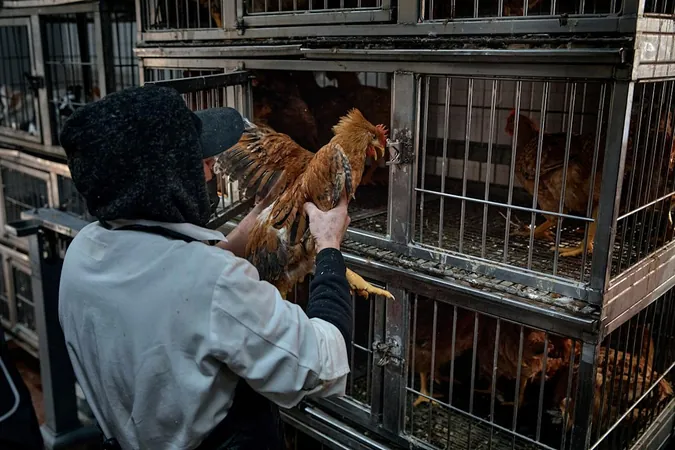
Silence of the Birds: Why the U.S. Hasn't Seen a New Human Bird Flu Case in Months
2025-06-04
Author: Wai
As 2025 kicked off, Americans were anxious about soaring egg prices and the potential spread of bird flu from wildlife to humans. This concern resurfaced recently when news broke that Moderna's $766 million contract with the Trump administration to develop a bird flu vaccine was canceled.
In the past 15 months, the CDC confirmed 70 human cases of bird flu across 13 states, but remarkably, no new cases have been reported in nearly four months, with the last incidents occurring in February in states like Nevada and Ohio.
California's Bird Flu Crisis Recap
California was a hotspot for the disease, reporting 38 cases by January. However, the state hasn't seen new cases since then. Testing has significantly decreased; while at least 50 individuals were tested monthly in 2024, only a few have been tested in recent months.
A CDC spokesperson noted that the drop in animal infections has led to a lower risk of human cases. "The number of new animal H5N1 infections has decreased, meaning fewer individuals are exposed to the virus," they explained.
What’s Causing the Drop in Cases?
The significant decline in cases raises questions. Expert Jennifer Nuzzo from Brown University shared her concerns, stating, "While cases have been mild, the H5N1 virus can be deadly. Historically, half of known human cases have resulted in death." So, why are we seeing fewer infections?
1. **Changed Bird Migration Patterns**: The natural rhythm of migratory birds, known carriers of the virus, may be shifting, leading to a temporary drop in human cases, experts suggest.
2. **Decreased Virus Circulation**: There has been less frequent detection of the virus in poultry and cattle, leading to fewer infections among workers.
3. **Reduced Testing**: Nuzzo worries about the stark decline in testing for H5N1 at state levels. "This could mean we’re not catching cases rather than the virus disappearing," she stated.
4. **Wastewater Surveillance is Down**: There's been a slowdown in detecting the virus through wastewater samples, signaling less transmission.
5. **Current Virus Strain**: The existing strain of the virus hasn’t mutated to spread easily between humans, as no human-to-human transmission has been confirmed.
Concerns About Future Monitoring
Nuzzo expressed fears that federal funding cuts might hamper bird flu monitoring efforts. With over 15,000 USDA employees opting for early retirement, agricultural supervision has weakened. Nuzzo warned, "Without active monitoring and communication, we might not understand the true threat."
Public Health Considerations
The CDC maintains that the risk to the general public remains low. However, those working closely with livestock are at a higher risk. Nuzzo emphasized concern for farmworkers, particularly undocumented individuals, who may avoid testing due to fears of deportation.
"This fear can severely impede public health responses and early detection of outbreaks," warned Dr. Krutika Kuppalli from the University of Texas.
Is Bird Flu a Future Pandemic Threat?
While some experts speculate about H5N1 leading to the next pandemic, the consensus is that another pandemic is inevitable. "The important takeaway is that we can create vaccines, but we must have them ready when needed," Nuzzo asserted.
In light of the Moderna vaccine contract cancellation, she argued, "Cutting investment in vaccine development is shortsighted and could be a decision we regret."



 Brasil (PT)
Brasil (PT)
 Canada (EN)
Canada (EN)
 Chile (ES)
Chile (ES)
 Česko (CS)
Česko (CS)
 대한민국 (KO)
대한민국 (KO)
 España (ES)
España (ES)
 France (FR)
France (FR)
 Hong Kong (EN)
Hong Kong (EN)
 Italia (IT)
Italia (IT)
 日本 (JA)
日本 (JA)
 Magyarország (HU)
Magyarország (HU)
 Norge (NO)
Norge (NO)
 Polska (PL)
Polska (PL)
 Schweiz (DE)
Schweiz (DE)
 Singapore (EN)
Singapore (EN)
 Sverige (SV)
Sverige (SV)
 Suomi (FI)
Suomi (FI)
 Türkiye (TR)
Türkiye (TR)
 الإمارات العربية المتحدة (AR)
الإمارات العربية المتحدة (AR)